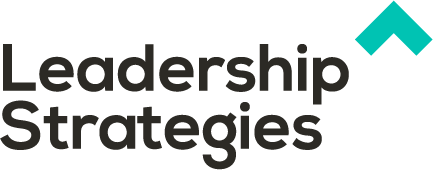Uncertainty is the only certainty. This insight has proven to be especially true in recent years. In today’s business climate, scenario planning isn’t just a buzzword—it’s essential. Our clients consistently tell us they are challenged to navigate a dizzying array of disruptions: rapid economic swings, shifting political landscapes, unpredictable supply chains, and customer behaviors that seem to evolve overnight.
All of these changes are happening at a pace that feels relentless, leaving even the most seasoned leaders questioning how to best position their organizations for the future. As a result, the competitive edge no longer belongs solely to the largest enterprises or those with the longest histories. Instead, the businesses that not only survive, but also thrive, are the ones that embrace agility—and that agility comes from scenario planning.
Scenario planning empowers organizations to anticipate multiple possible futures, rather than betting everything on a single prediction. For deeper insights, Harvard Business Review discusses how thoughtful and ongoing scenario planning exercises enable organizations to thrive in varying circumstances. Companies adopting this approach can pivot quickly, stress-test their strategies against both anticipated and unforeseen challenges, and remain resilient in the face of ongoing disruption. In other words, scenario planning is the discipline that equips businesses to weather uncertainty, capitalize on opportunity, and stay a step ahead in a world where the only constant is change
Scenario Planning: Why you need it now more than ever
Is scenario planning about predicting the future? In reality, it’s about preparing for multiple possible futures so that your business can respond proactively rather than reactively. The goal isn’t to predict what will happen but to develop a set of strategies that work across multiple possibilities.
Given the landscape that businesses are dealing with today, Scenario Planning Companies emphasize that organizations failing to plan for different economic and political scenarios are setting themselves up for disruption.
What Every Business Needs to Prepare for Multiple Futures
The first step in scenario planning is identifying what changes could impact your business and how. This typically means focusing on two major areas:
- Economic Uncertainties: Interest rates, inflation, recession risks, labor market changes, customer spending trends.
- Political & Regulatory Uncertainties: Trade policies, taxation changes, global conflicts, new regulations affecting your industry.
Once you’ve identified key uncertainties, it’s time to build possible scenarios based on how these factors could play out. These should cover:
- Best-case scenario
- Worst-case scenario
- Moderate scenario
- Wildcard scenario (an unexpected scenario like a new groundbreaking technology or global pandemic event)
For each scenario, leadership needs to ask:
- How would our business be affected?
- Does this present opportunities?
- What risks will we face?
- How do we need to adjust and adapt?
Once you have identified the scenarios, it’s time to test how well your current strategies hold up and what are the impacts in each scenario. The impacts on:
- Revenue streams
- Profitability
- Supply chain resilience
- Workforce strategy
- Regulatory compliance
Planning is great but without action, it’s meaningless. Once you’ve mapped out your scenarios, create and document concrete plans for how your company will respond to each one. Then make sure you have these plans ready to execute so that you aren’t reacting in the moment if the scenario plays out. The companies that thrive in uncertainty are the ones that don’t just plan—they prepare to act.
Making Scenario Planning Part of Your Strategic Process
Our work with clients has shown that organizations incorporating scenario planning into their overall strategic planning process remain competitive, even in unpredictable climates. Industry leaders revisit their scenarios at least twice a year, updating strategies in light of new developments.
If you want to take your organization’s planning from static to agile, explore our comprehensive guides and resources on strategic planning. Take a deeper dive into proven methods, like the Drivers Model, which helps organizations of all sizes create robust, actionable strategies that work in the real world. Visit our Essential Guide to Strategic Planning and learn more about Strategic Planning Facilitation to strengthen your approach.
Standing still isn’t an option. The companies that succeed are those that ask, “What if?” before the rest of the market reacts to “What happened.” So the question is: Are you planning for that unpredictable future—or waiting to see if it happens?


About the Author
President and CEO of Leadership Strategies, David Stargel brings over 30 years of leadership training and consulting expertise. Renowned for taming industry giants like Deloitte, SAP, Apple, and Gulfstream, David thrives in high-stakes projects, steering them toward success with finesse.

